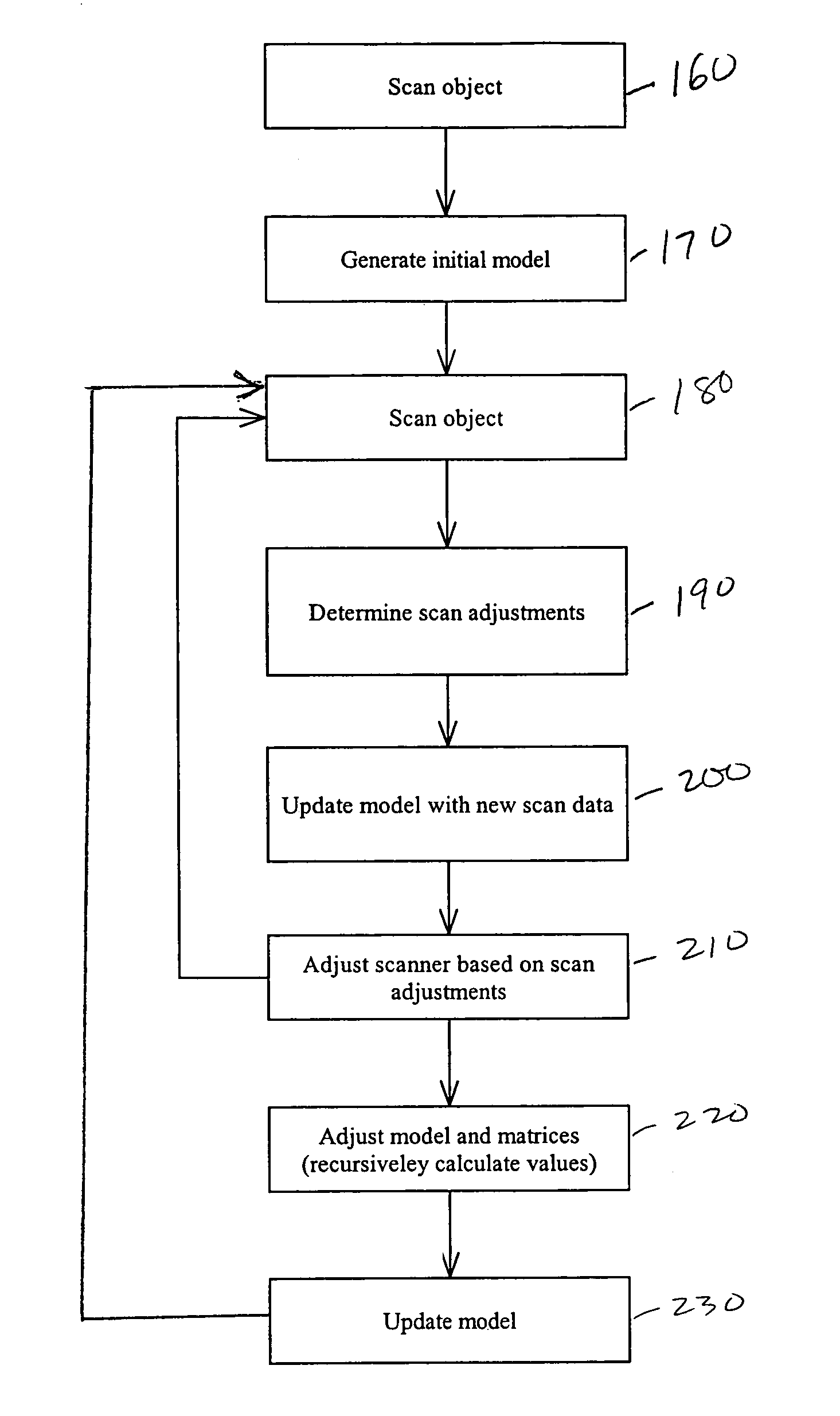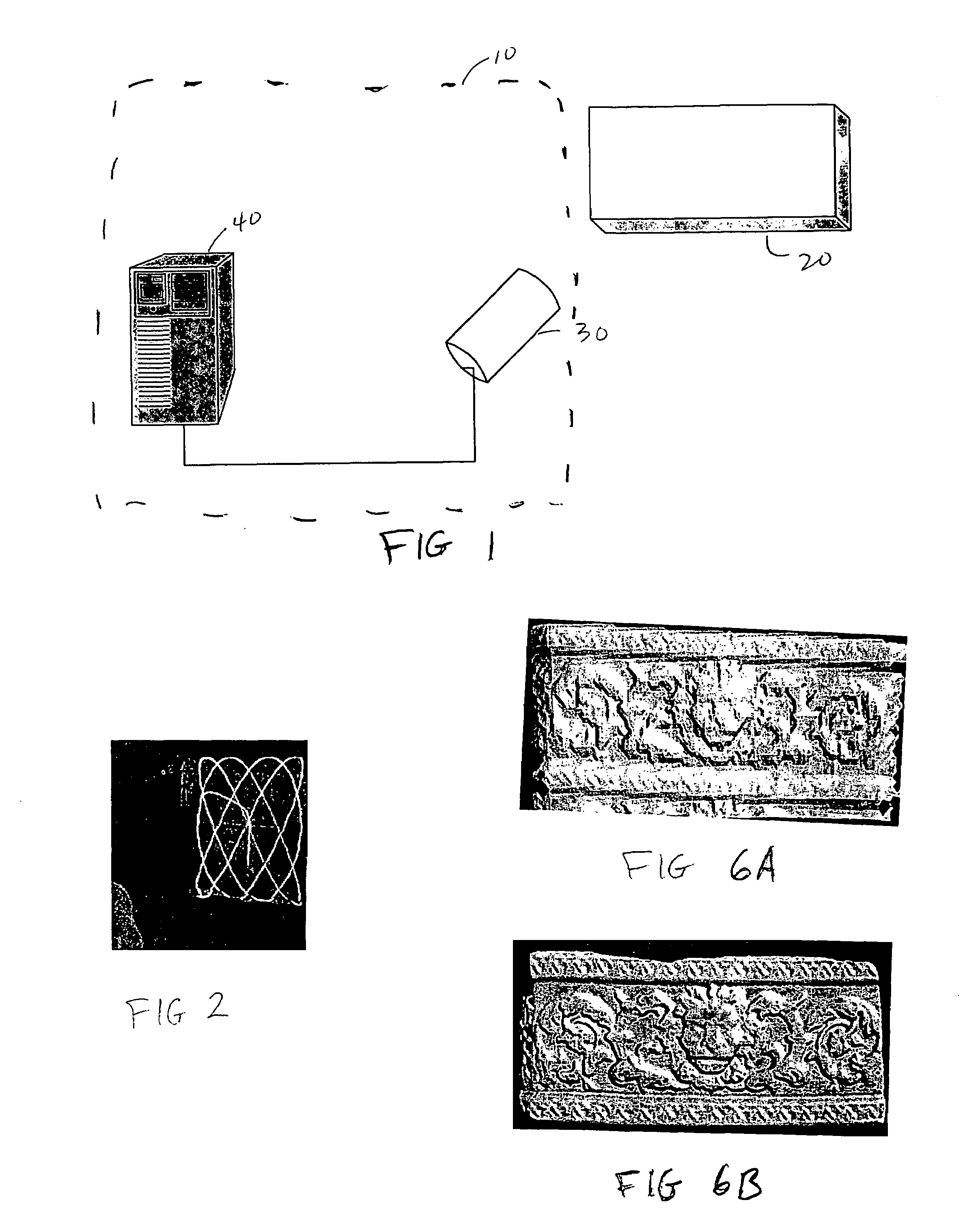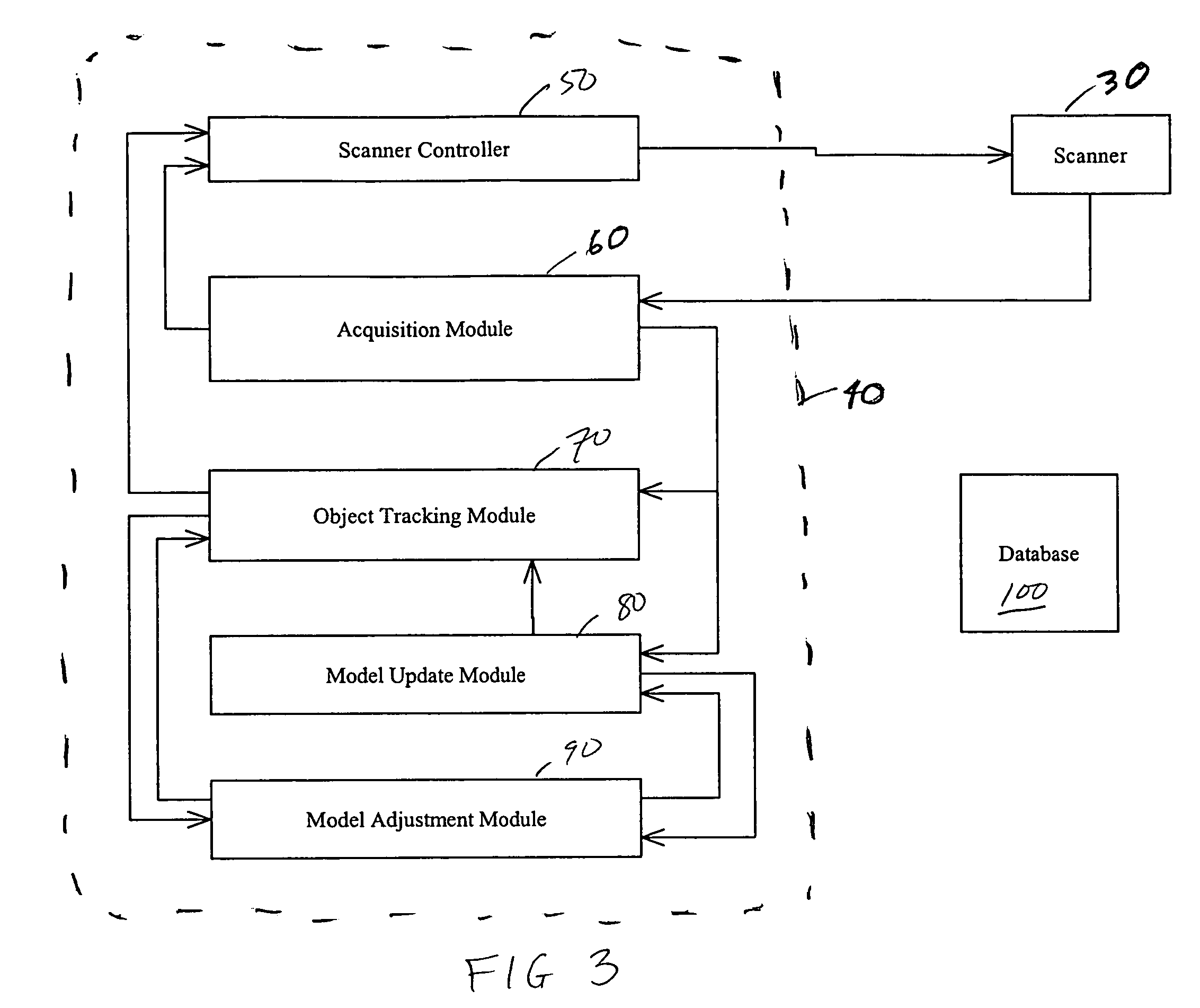Recursive 3D model optimization
a three-dimensional model and optimization technology, applied in the field of three-dimensional modelling, can solve the problems of complex and expensive optical or mechanical equipment, inability to duplicate cheap consumer goods, physical cumbersome, etc., and achieve the effect of maximizing the correlation between the data generated and the model
- Summary
- Abstract
- Description
- Claims
- Application Information
AI Technical Summary
Problems solved by technology
Method used
Image
Examples
Embodiment Construction
[0034]Referring to FIG. 1, a system 10 for generating and optimizing a 3D model of an object 20 is illustrated. The system 10 consists of a scanner 30 and a data processing subsystem 40. The data processing subsystem 40—controls the scanning of the object 20 by the scanner 30 and receives scan data from the scanner 30. The data processing subsystem 40 also processes the scan data from the scanner 30 to create a 3D model of the object 20.
[0035]One of the methods which may be used by the data processing subsystem 40 in processing the scan data is what is known as ICP (Iterative Closest Point) methods. Mathematically, the objective of these ICP methods is to find the rigid transformation matrix Mk that will align the range data set Xk in the scanner coordinate system with the model reference image data set xmk where
xmk=Mkxk
xk=[x y z1]T
[0036]To use these methods, it is assumed that the images are rigid, accurate, and stable during the acquisition. As noted above, the prior art uses co...
PUM
 Login to View More
Login to View More Abstract
Description
Claims
Application Information
 Login to View More
Login to View More - R&D
- Intellectual Property
- Life Sciences
- Materials
- Tech Scout
- Unparalleled Data Quality
- Higher Quality Content
- 60% Fewer Hallucinations
Browse by: Latest US Patents, China's latest patents, Technical Efficacy Thesaurus, Application Domain, Technology Topic, Popular Technical Reports.
© 2025 PatSnap. All rights reserved.Legal|Privacy policy|Modern Slavery Act Transparency Statement|Sitemap|About US| Contact US: help@patsnap.com



